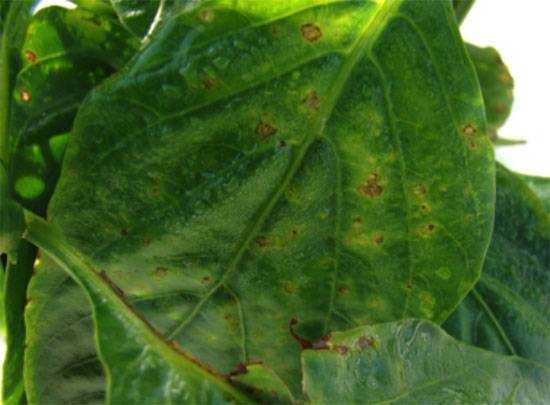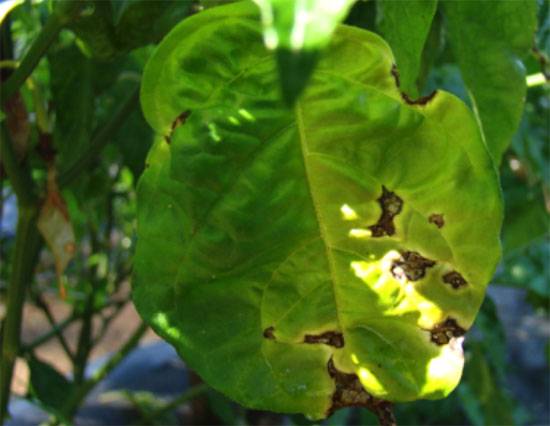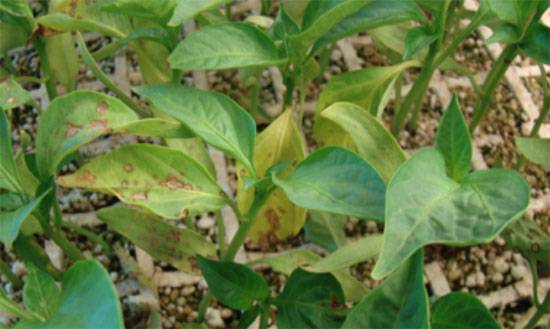Capsicum
Bacterial Spot

Xanthomonas campestris pv. vesicatoria, and X. vesicatoria
Bacterial Disease

Xanthomonas campestris pv. vesicatoria, and X. vesicatoria
Bacterial Disease

Xanthomonas campestris pv. vesicatoria, and X. vesicatoria
Bacterial Disease

Xanthomonas campestris pv. vesicatoria, and X. vesicatoria
Bacterial Disease

Xanthomonas campestris pv. vesicatoria, and X. vesicatoria
Bacterial Disease

Xanthomonas campestris pv. vesicatoria, and X. vesicatoria
Bacterial Disease

Xanthomonas campestris pv. vesicatoria, and X. vesicatoria
Bacterial Disease
Bacterial spot is a common and destructive disease affecting capsicum (bell peppers), particularly under warm, humid, and rainy conditions. It is caused by a bacterium that can enter fields through contaminated seeds or transplants, and once established, it spreads rapidly via wind-driven rain. The disease primarily targets the leaves, but it can also affect the fruits, stems, and flowers. Early detection and proper management are essential to prevent severe infections, as the disease can stunt plant growth, cause leaf blight, and lead to unsightly lesions on the fruit. Below are key points about the symptoms, spread, and impact of bacterial spot in capsicum:
Bacterial Spot of Capsicum: Key Points
1. Ideal Conditions for Disease Spread
- Warm temperatures (23°C to 30°C), high rainfall, and high humidity promote the occurrence and spread of bacterial spot.
2. Entry and Spread
- The disease can enter a field via contaminated seeds or transplants.
- Spread within the field occurs easily through wind-driven rain.
3. Leaf Symptoms
- Initial symptoms appear as small water-soaked lesions, typically noticed on the underside of leaves.
- The pathogen enters through wounds or natural openings like stomates.
- As the disease progresses, small, irregular lesions appear on the upper side of the leaves, which later turn brown and necrotic in the center.
- Severe water-soaking during heavy rainfall can cause leaves to collapse.
4. Plant Impact
- Severely infected plants may become stunted, with blighting and leaf drop.
5. Fruit Symptoms
- Lesions on fruits are raised and warty, resembling those caused by bacterial spot in tomatoes.
- Lesions may also form on peduncles, pedicels, and flowers.
6. Blighting
- Leaf blighting can occur at the margins, and fruit spots are sometimes present.
7. Risk from Contaminated Transplants
- Both symptomatic and non-symptomatic contaminated transplants can lead to early infection and high disease severity in the field.
Effective management requires the use of clean seeds and transplants, along with regular monitoring to reduce the impact of this bacterial disease on capsicum crops.
Source: University of Florida





